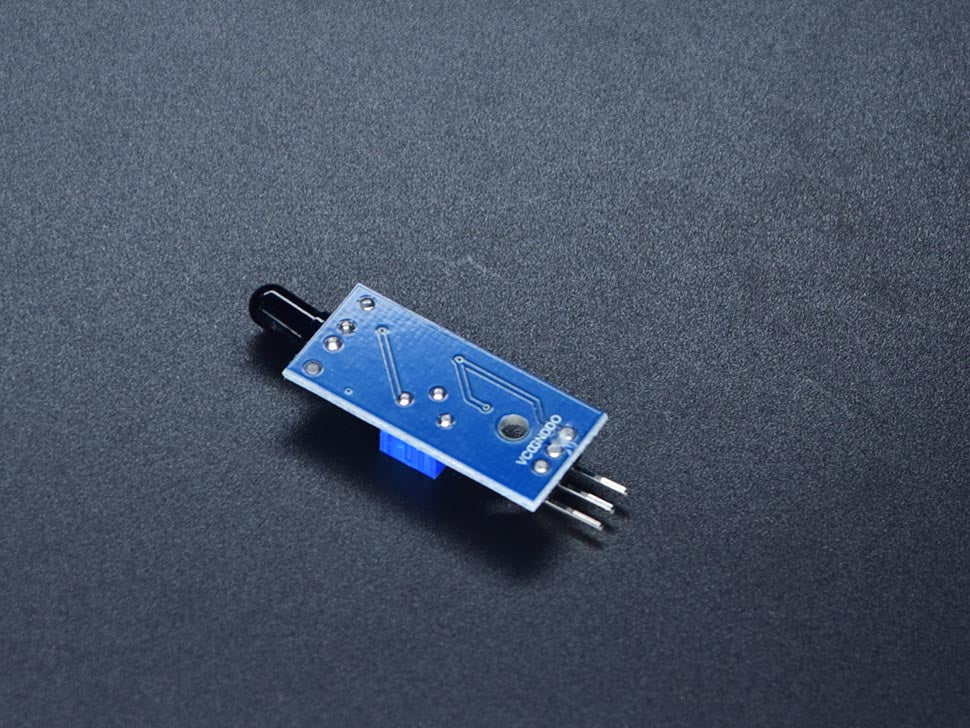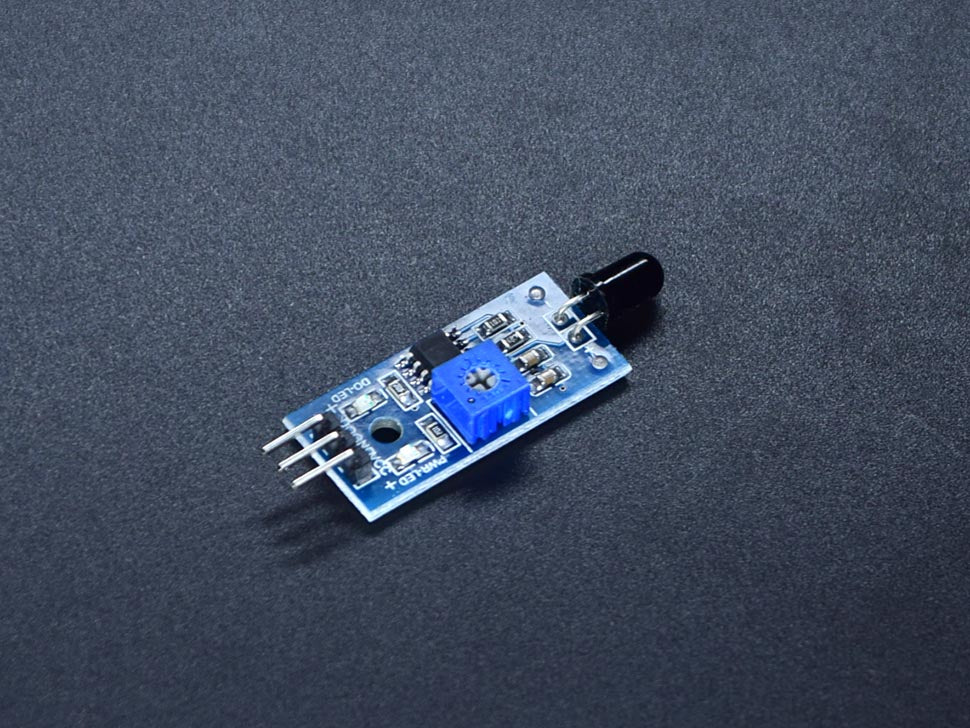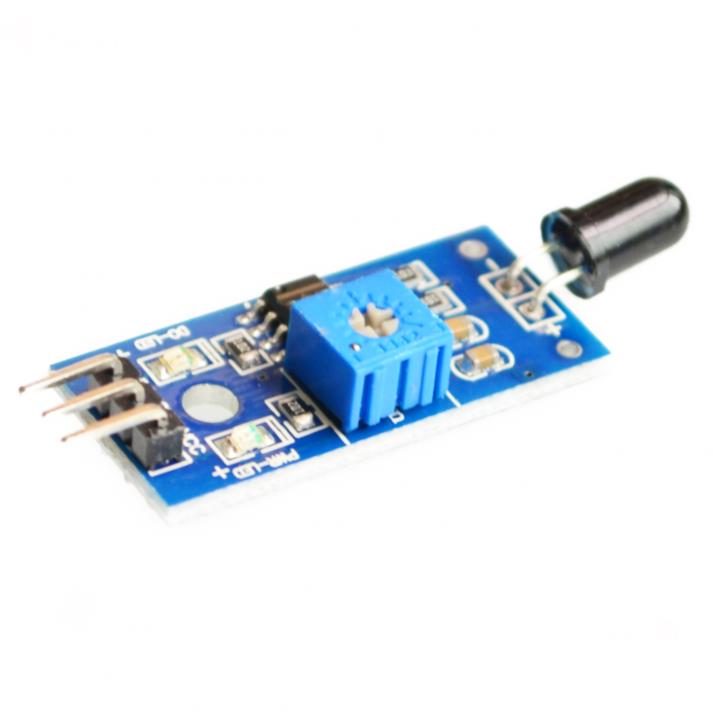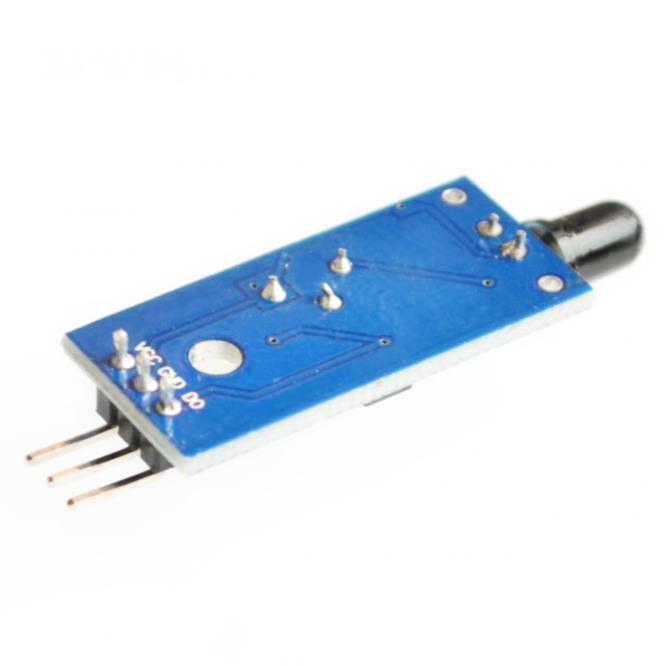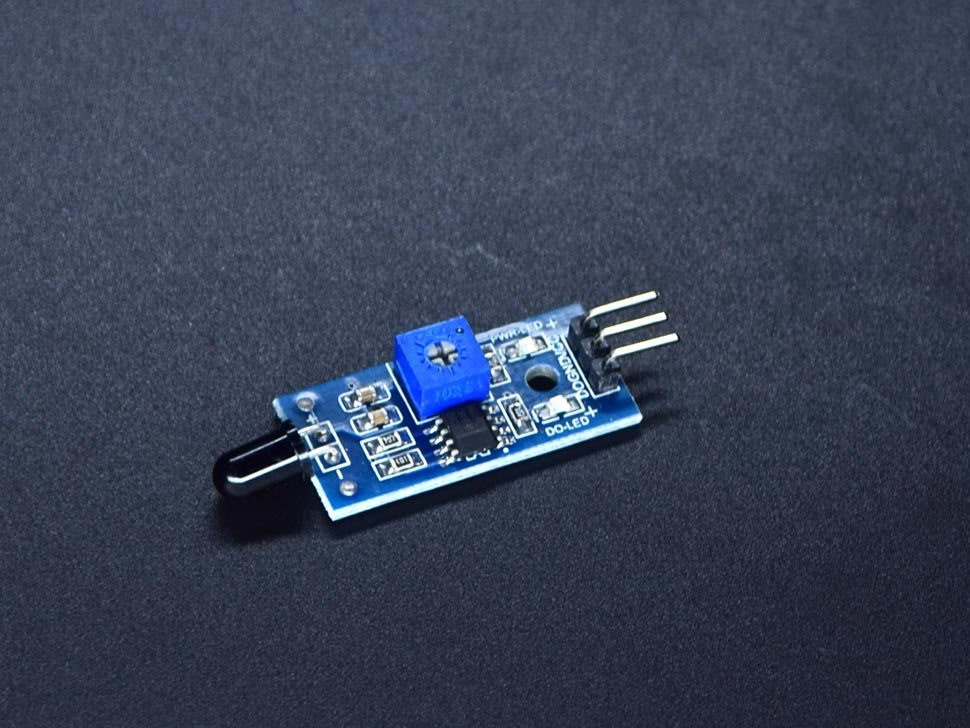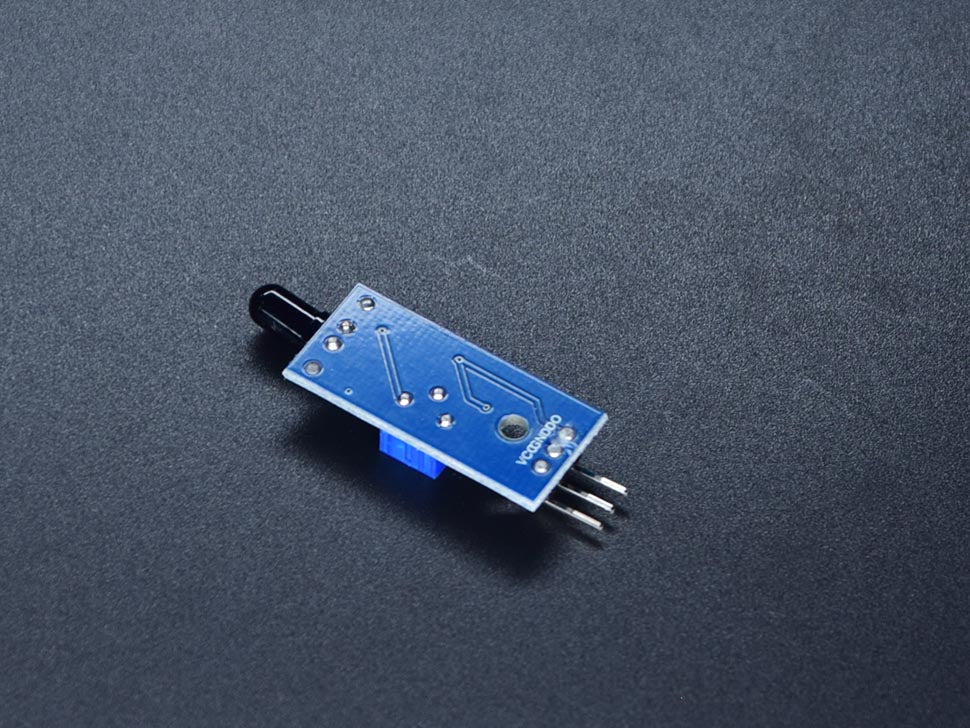Flame Sensor for Arduino
Flame Sensor (Analog + Digital) detects the infrared light emitted by open flames (candles, lighters, alcohol burners). It provides both a digital output (D0) with an adjustable threshold and a raw analog output (A0) for precise readings—perfect for alarm demos, line-of-sight flame tracking, and fire-themed robotics projects in the Philippines.
Analog precision + Digital convenience — Calibrate in seconds
- Two outputs: use D0 (LM393 comparator) for on/off alarms, or A0 to read intensity via ADC.
- Adjustable sensitivity: trim the onboard potentiometer to set your trip level; status LEDs help you tune it fast.
- 3.3–5V friendly: works with Arduino Uno, Nano/ESP32 (3.3V logic), and many MCUs.
- Narrow IR band: most flame sensors respond best around 760–1100 nm; less false triggers than general LDRs.
- Compact module: breadboard-friendly pins; easy to mount in small enclosures.
What you can build
- Flame alarm: D0 → relay module or buzzer for audible alerts
- Fire-seeking robot: multiple sensors to locate a flame, then trigger a blower/pump
- Safety interlock: only enable gas valve/igniter when flame is detected (demo rigs)
- Lab experiments: log A0 to SD/PC to measure intensity versus distance/angle
Starter bundles (quick picks)
- Alarm Starter: Flame sensor + Arduino Uno + buzzer + 1-ch relay
- Data Logger: Sensor + Uno + microSD module + jumpers
- Robot Demo: 2–3 sensors + servo/fan + TB6612 motor driver
Recommended add-ons
- Dupont jumper wires • breadboard • 5V supply
- Multimeter for calibration • resistor kit • tools
- OLED/TFT display to show A0 levels in real time
Technical specifications
| Sensor type | IR flame sensor (photodiode/phototransistor tuned to ~760–1100 nm) |
|---|---|
| Outputs | D0 (digital, TTL, threshold via LM393) • A0 (analog voltage proportional to IR intensity) |
| Supply voltage | 3.3 V to 5 V DC |
| Logic level | 3.3/5 V compatible digital output (module-dependent; typical TTL high ≈ VCC) |
| Adjust | Onboard potentiometer to set D0 trip level (LED indicators for PWR/DO) |
| Detection angle | ≈ 60° cone (varies by lens and batch) |
| Typical range | Up to ~80–100 cm for a lighter flame in dim light (depends on flame size & ambient IR) |
| Interface pins | VCC, GND, D0, A0 |
| Board size | Small module; fits breadboards and mini project boxes (dimensions vary slightly by batch) |
Pinout & power notes
- VCC: 3.3–5 V; keep wires short and add 0.1 µF decoupling near the module if cables are long.
- AO → ADC: connect to an analog pin (e.g., A0 on Uno) for smooth readings; average multiple samples for stability.
- DO → interrupt/IO: use as a simple HIGH/LOW alarm; adjust the trimmer until the DO LED toggles at your desired threshold.
- Avoid false triggers: bright sunlight, hot metal, and reflections can emit IR—shield the sensor or add a short tube/baffle.
Safety & usage notes
- For demos only: do not use as a sole life-safety or fire-protection device.
- Test with care: keep real flames small and controlled; have water/sand on hand and follow lab safety practices.
What’s in the box
- Flame sensor module (Analog + Digital)
FAQs – Flame Sensor (Philippines)
Will it work with Arduino/ESP32?
Yes. Power at 3.3–5 V. Read A0 on an ADC pin for intensity, or use D0 as a simple HIGH/LOW alarm.
How do I calibrate the digital output?
Point at the flame and turn the trimmer until the DO LED just changes state at your desired distance. Verify in code and add hysteresis if needed.
Why do I get false triggers in daylight?
Sunlight and hot objects emit IR. Use a short tube/shroud, reduce the field of view, and re-tune the threshold. Prefer analog readings + averaging.
Do you ship nationwide?
Yes—nationwide shipping across the Philippines via trusted couriers, with fast dispatch for Metro Manila orders. We also support school/corporate orders.
Related collections
Sensors • Arduino Boards • Power Supplies • Cables • Tools • Multimeters
Flame Sensor for Arduino
Flame Sensor for Arduino
555 in stock
Product Code
SKU:AB122
Regular price
₱ 45.00
Regular price
Sale price
₱ 45.00
Unit price
per
Couldn't load pickup availability




